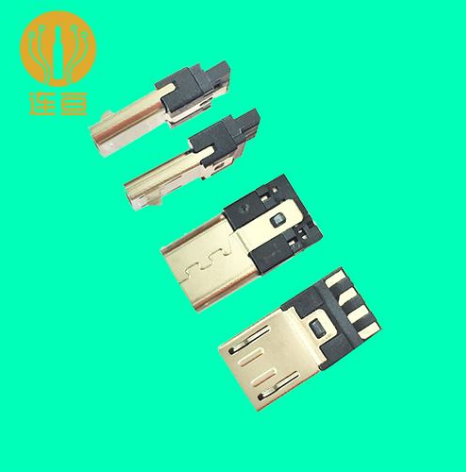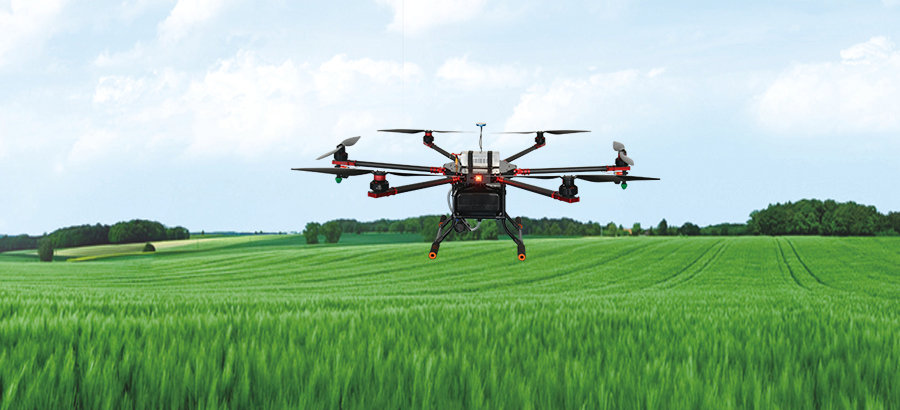There are a wide variety of electronic connectors, but the manufacturing process is basically the same. Shanghai Lian Jie Electric said that the manufacture of connectors can generally be divided into four stages: stamping, electroplating, injection molding, and assembly.

The manufacturing process of electronic connectors generally begins with a stamped pin. Through large-scale high-speed punches, electronic connectors (pins) are stamped from thin metal strips. One end of the large-volume metal belt is fed into the front end of the punching machine, and the other end is wound into the reeling belt through the hydraulic workbench of the punching press. The metal belt is pulled out by the reeling belt and rolled up to punch out the finished product.
2, electroplatingAfter the Connector pin stamping is complete, it should be sent to the plating section. At this stage, the connector's electronic contact surface will be plated with various metal coatings. A similar problem to the stamping stage, such as twisting, chipping, or deformation of the pins, also occurs during the punching of the pins into the plating equipment. Through the techniques described in this article, such quality defects are easily detected. However, for most machine vision system suppliers, many quality defects that occur in the electroplating process also belong to the “forbidden zone†of the inspection system. Electronic connector manufacturers want the inspection system to be able to detect various inconsistent defects such as fine scratches and pinholes on the plated surface of the connector pin. Although these deficiencies are easily identifiable with other products (eg, aluminum can bottom covers or other relatively flat surfaces), visual inspection systems are difficult to obtain due to the irregular and angular surface design of most electronic connectors. An image sufficient to identify these subtle defects. Because some types of pins need to be plated with multiple layers of metal, manufacturers also want the inspection system to be able to distinguish the various metal coatings to verify that they are in place and in the right proportions. This is a very difficult task for a vision system using a black-and-white camera because the gray levels of the images of different metal coatings are virtually the same. Although the camera of the color vision system can successfully resolve these different metal coatings, the problem of lighting difficulties still exists due to the irregular angles and reflective effects of the coating surface.
3, injection moldingThe plastic connector of the electronic connector is made during the injection molding stage. The usual process is to inject the molten plastic into the metal film and then rapidly cool it. The so-called “leakage†that occurs when molten plastic fails to fully fill the membrane is a typical defect that needs to be detected during the injection molding stage. Other defects include the filling or partial blockage of the receptacles (the receptacles must remain clear and clean for proper insertion with the pins during final assembly). Due to the fact that the use of backlight can easily identify the leakage of the cartridge holder and the jamming of the connector hub, a machine vision system for quality inspection after injection molding is relatively simple and easy to implement.
4, assemblyThe final stage in the manufacture of electronic connectors is assembly of finished products. There are two ways to connect the plated pins with the injection box seats: separate plug or combination plugs. Individual plugging refers to inserting one pin at a time; a combined plug inserts multiple pins at the same time with the cassette holder. Regardless of the type of patching method used, manufacturers are required to detect all pins in the assembly stage for missing and correct positioning. Another type of routine inspection task is related to the measurement of the spacing on the mating surface of the connector. As with the stamping phase, the assembly of the connectors also poses challenges to the speed of detection in automated inspection systems. Although most assembly lines beat at one or two pieces per second, the vision system usually has to complete several different inspection items for each connector that passes through the camera. Therefore, the detection speed becomes an important system performance indicator again. After assembly is complete, the connector dimensions are orders of magnitude larger than the allowable dimensional tolerances for a single pin. This also brings another problem to the visual inspection system. For example, some connector bays are over one foot in size and have hundreds of pins. The detection accuracy of each pin location must be within a few thousandths of an inch. Obviously, the detection of a one foot long connector cannot be completed on an image, and the vision inspection system can only detect a limited number of pin quality in a small field of view at a time. There are two ways to complete the detection of the entire connector: use multiple cameras (to increase the system cost); or trigger the camera continuously when the connector passes in front of a camera, the vision system "stitched" single-shot images taken continuously. , to determine the quality of the entire connector is qualified. The latter method is generally used in the ppt visual inspection system after the connector assembly is completed.
The detection of "actual location" is another requirement for the connector assembly to detect the system. This "actual position" refers to the distance from the top of each pin to a specified design reference line. The vision inspection system must make this hypothetical baseline on the inspection image to measure the 'actual location' of each pin vertex and determine if it meets the quality standard. However, the reference point used to delineate this reference line is often invisible on the actual connector, or sometimes on another plane and cannot be seen at the same time of the same shot. Even in some cases, the plastic on the connector box has to be ground to determine the position of this reference line.
Drone Wire Harness has been widely used in the field of drones, and they are extremely important in both civilian and military fields. The performance and quality of drone products, in addition to the monitoring and improvement of the drone operation program, etc., the safety test of the drone's internal wiring harness itself cannot be ignored. The drone wire harness must be strictly tested and inspected before leaving the factory to ensure the safety of the wiring harness from multiple perspectives such as conduction, withstand voltage, and insulation.
As a new type of scientific and technological product, drone has the advantages of small size, low cost and convenient use compared with manned aircraft, so it is used more and more in our lives. Drone can be seen in various fields from the initial entertaining flight performances to aerial photography, logistics, inspection, disaster rescue and other fields. In addition to the further expansion of the application field of drones, the domestic drone market has also been booming in recent years. Industry experts said that my country's drone companies have accumulated a lot in recent years and have grown rapidly, becoming the industry leader.
Among civilian drones, the consumer drone market is relatively large. In addition to being used for civilian use, drones are also of great significance to the future air combat in the military field. Major military countries in the world are stepping up their research and development work, such as the Wing Loong-II UAV and the Rainbow 5 UAV, which have become my country's drone "business card".
Our Cable Assembly is robust and support signal integrity throughout the operation. Designed to maintain the performance of electrical systems in harsh aerospace environments. They Our wiring harness can be used in various aerospace applications, such as drones.
It is very important that the cable assembly must comply with all industry specifications. Strict certification standards must be adhered to, so you must keep this in mind when choosing the right cable assembly for your product.
In addition to Drone Wire Harness, we also have Vehicle cable assembly and Industrial Cable Assembly.

Drone Wire Harness,Drone Wiring Harness,Drone Power Cable Harness,Drone Battery Wire Harness
Kable-X Technology (Suzhou) Co., Ltd , https://www.kable-x-tech.com